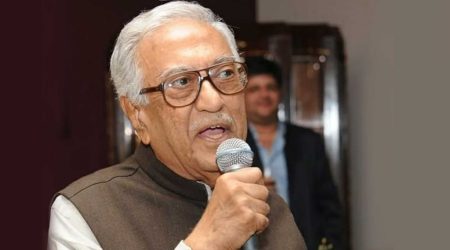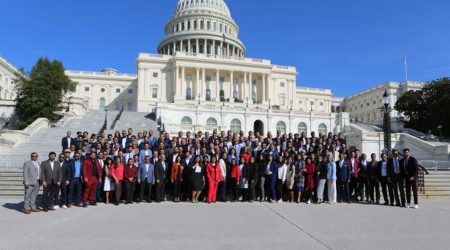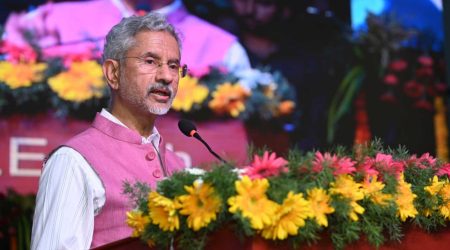There is a distinction between Development and Prosperity
Dr Anil P Joshi
The world is rapidly heading towards ecological crises, yet there is a notable lack of serious global concern. Various UN-related bodies or other international organizations release reports on air, water, and soil, painting a grim picture of the current status.
We are facing serious threats to the survival of humans and other living beings. Speculation suggests that if this trend continues, life on Earth may perish by the end of this century. The status review of life resources is very threatening: air quality is globally poor, water is scarce, its quality questioned, and soil, essential for food production, has become hazardous. Contrarily, global growth is constantly rising, especially from a developmental perspective. Unfortunately, our understanding of growth is poor.
There is a distinction between Development and Prosperity, the former being unidirectional while the latter is inclusive. The basics of growth point to the fact that life cannot survive without life resources, yet this has been largely ignored in the pursuit of development. In this context, we are at a loss. Unfortunately, this is a global story. Although this issue is often discussed annually in COP meetings, it seems to be primarily about fighting for economic growth in ecological disguise.
Various measures have been adopted worldwide to cope with environmental distressing issues, including in India. One such measure is afforestation, a concern nowadays to increase global green cover. We have hardly 31 percent of our forest left. The richest forest cover is in Brazil, followed by 495 million hectare.
In the Indian context, it is still poor. We have 24.62 percent forest. We are far off the target, not only in terms of area but also by species.
There is a poor understanding of the tree species needed for afforestation programs. It depends upon the requirements. Thus, economic tree species often outweigh ecological ones. In this era where the economy takes major attention, ecology is pushed to the back foot. One United States’ study is worth mentioning.
While highlighting important US tree species, the study placed the Pine tree as more important than Oak, obviously due to the economic values of the former. Chir pine became important as it is an economically paying species while Oak ecological services were underestimated against economic factors. This is a common story worldwide. Economic species receive more attention than ecological ones. However, every forest species has its ecological significance. Planting a tree of no ecological value will not be environmentally productive unless it’s very local. There are numerous unfortunate examples where economic trees are prioritized over ecological ones.
This fact is universal. For example, in the case of the Himalayas, in recent decades, the department has planted tree species that have nothing to do with the local ecology. Tectona grandis, Teak trees, were planted in sensitive foothills. It was important for the department to plant trees with economic value and better survival rates. However, one can observe the detrimental impact of this decision, as nothing else is growing under these trees. While these trees robustly grow and provide good timber, they leave no room for undergrowth and contribute to soil runoff.
Ultimately, one obtains timber but without associated ecological benefits. These trees belong to South India and have been imposed on the Himalayas. Other cosmopolitan examples include Eucalyptus and Poplar, which are grown for their economic values. This scenario is common in other parts of the world, where species with economic values are preferred. Unfortunately, the ecological contributions of such species are negligible.
In fact, afforestation programs often overlook the ecological contribution of the species, focusing solely on economic returns and survival rates. It has been observed in the past that local species require time and care for their survival and growth, which is why the forest department often prefers species that can survive in any situation. This trend has persisted for many decades. There is little discussion or debate regarding whether the species planted have their ecological contribution.
The reason is that we do not fully understand the history of forests and their growth. It was nature alone that developed or created forests on Earth. Understanding forest history can enlighten us on how forests came to exist and which species established themselves in particular locations. Nature determined the species suitable for specific zones. For example, in the Himalayas, only species capable of thriving in mountainous conditions were allowed to grow, while in southern or arid zones, species suited to those ecological conditions were established. Before human interference, species were governed by nature, adapting to altered climatic conditions over time, and forest species succession naturally reestablished for each ecological zone.
Here lies a simple natural principle that we unfortunately ignore when planning afforestation today. Nature allocates particular species to specific regions, and we should target those species for afforestation efforts. Past studies have shown that foreign species do not contribute to the growth of local ecosystems. This is one reason why our efforts fail to yield desired results. Forest cover will not be ecologically productive unless we encourage species selection based on nature’s preferences. In the past, we often planted trees for their survival or economic value, but now is the time to prioritize climatic forestry, especially from an ecological perspective. Only species that match a particular climate should be promoted. With constant efforts, we can restore effective local ecosystems.
It is crucial to understand that while humans may prefer certain species, nature prefers species based on the ecological conditions of each zone. Efforts should be directed towards allowing nature to grow species using its own methods. We must assist nature in promoting its own course. Recognizing that water preceded forests, we can utilize this principle to treat proposed afforestation zones. By increasing water holes, over time, nature’s preferred species will emerge. Climatic forestry not only restores forests but also improves the overall ecosystem.
For instance, in 2010, HESCO conducted an experiment to address a drying river. By treating the catchment area with water holes, the river’s water discharge increased. These holes, filled with rainwater, recharged aquifers below, resulting in the return of water to the river. This initiative not only recharged the river but also invited local species, enriching the biodiversity of the area. It is abundantly rich in flora and fauna now.
Therefore, it is high time for climatic forestry, which is inclusive and revitalizes the entire ecosystem. We must develop a strategy to create forests that match the local climate and ecosystem. Addressing global warming and climate change can only be achieved by planning forestry in accordance with nature.
Climatic forestry will be one of the key strategies to combat these pressing issues.
———————-
Dr. Anil Prakash Joshi is an environmentalist, green activist, and the founder of Himalayan Environmental Studies and Conservation Organization (HESCO). A recipient of Padma Shri in 2006 and Padma Bhushan in 2020 for environmental conservation, Joshi has coined the term, “GEP: Gross Environmental Product”.
Disclaimer: The views expressed are not necessarily those of The South Asian Times











